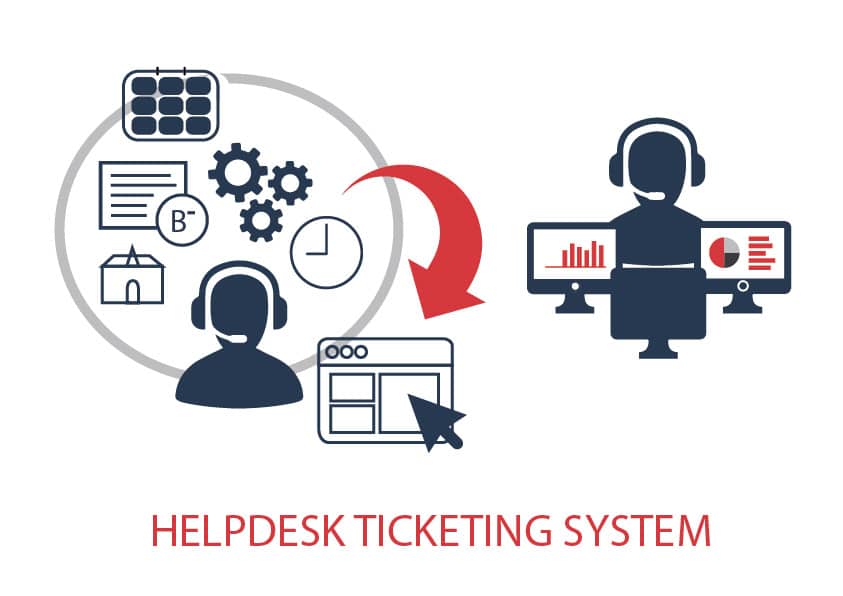In the realm of customer service and IT support, ticket routing plays a pivotal role. It’s the backbone of efficient incident tracking and resolution.
But what exactly is ticket routing? And why is it so crucial?
Simply put, ticket routing is the process of directing support requests to the right resources. It ensures that each ticket lands in the right hands, at the right time.

This process can significantly improve response times and customer satisfaction. It can also enhance the efficiency of your ticketing tool, especially when dealing with deposit ticket routing numbers. In this article, we delve into the best practices for setting up and managing ticket routing systems. Whether you’re an IT professional, a customer service manager, or a business owner, you’ll find actionable insights to optimize your support ticket system. Join us as we explore the world of ticket routing, its importance, and how to make it work best for your organization.

This process can significantly improve response times and customer satisfaction. It can also enhance the efficiency of your ticketing tool, especially when dealing with deposit ticket routing numbers. In this article, we delve into the best practices for setting up and managing ticket routing systems. Whether you’re an IT professional, a customer service manager, or a business owner, you’ll find actionable insights to optimize your support ticket system. Join us as we explore the world of ticket routing, its importance, and how to make it work best for your organization.
Understanding Ticket Routing and Its Importance
Ticket routing is more than just assigning tickets. It’s about managing and prioritizing support requests effectively. When done right, it can drastically improve your team’s response times. This leads to happier customers and a more efficient support team. Moreover, efficient ticket routing can have a significant impact on incident tracking. It ensures that no ticket falls through the cracks, and every issue gets resolved. In essence, ticket routing is a vital cog in the machinery of customer service and IT support. It’s the key to delivering timely, effective solutions to your customers’ problems.Key Components of an Effective Ticket Routing System
A robust ticket routing system is made up of several key components. Each plays a crucial role in ensuring the smooth operation of your support system. Firstly, the system should have advanced routing capabilities. This allows for the automatic assignment of tickets based on predefined rules. Secondly, it should be able to categorize and prioritize tickets. This ensures that urgent issues are addressed first. Thirdly, the system should be integrated with other business systems. This allows for a seamless flow of information and better coordination. Lastly, the system should have a clear and updated knowledge base. This aids in faster resolution of issues. In essence, a good ticket routing system should be:- Automated
- Prioritized
- Integrated
- Knowledge-based
Incident Tracking Integration
Incident tracking is a vital part of any ticket routing system. It helps keep track of all support requests and their status. Integration of incident tracking into your ticket routing system ensures that all tickets are accounted for. It also helps in identifying recurring issues and trends. In short, incident tracking integration is key to maintaining an efficient and effective ticket routing system.Utilizing Ticketing Tools
Ticketing tools are essential for managing support requests. They help in organizing, tracking, and resolving tickets efficiently. A good ticketing tool should have features like automation, categorization, and prioritization. It should also provide analytics to help you optimize your ticket routing process. In essence, a ticketing tool is a must-have for any business looking to improve its ticket routing system.Deposit Ticket Routing Number: What You Need to Know
A deposit ticket routing number is a unique identifier used in financial transactions. It’s not directly related to support ticket routing, but it’s worth understanding. In the context of ticket routing, it serves as a reminder of the importance of unique identifiers. Just like a deposit ticket routing number, each support ticket should have a unique identifier. This ensures that each ticket can be tracked and managed effectively, contributing to a more efficient ticket routing system.Best Practices for Setting Up Ticket Routing
Setting up a ticket routing system requires careful planning. Here are some best practices to guide you. First, define clear routing rules. These rules should be based on factors like ticket type, priority, and the skills required for resolution. Second, ensure that your system is scalable. It should be able to handle an increase in ticket volume without compromising efficiency. Third, integrate your ticket routing system with other business systems. This will allow for seamless information flow and better coordination. Lastly, set up a clear escalation path. This ensures that tickets that cannot be resolved at the first level are escalated to the appropriate team or individual. In summary, when setting up a ticket routing system:- Define clear routing rules
- Ensure scalability
- Integrate with other systems
- Set up a clear escalation path



